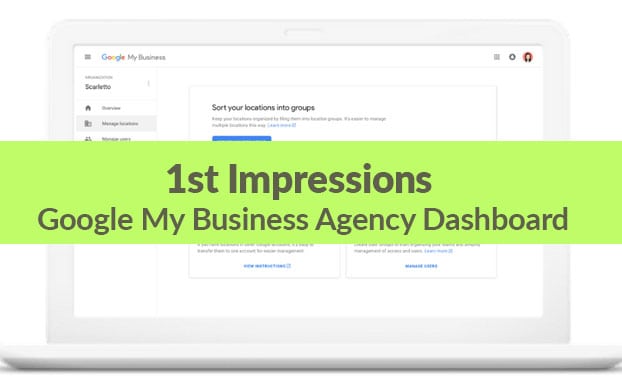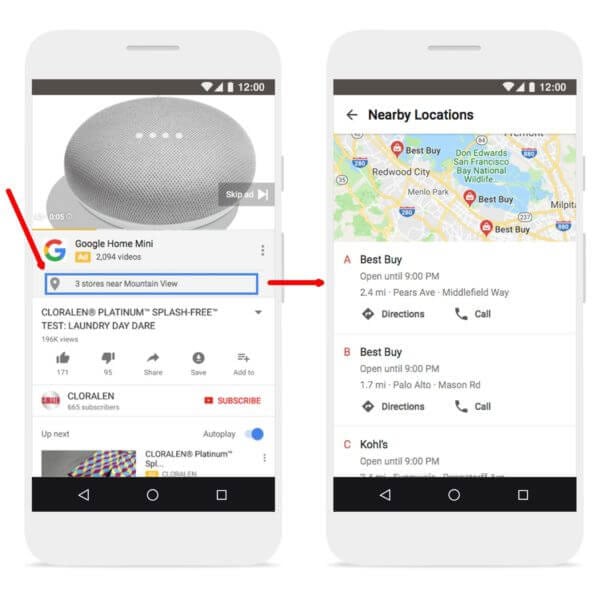Digital Marketing News: 1st Impressions of Google My Business Agency Dashboard
Every week we’re collecting a host of links, videos, and assorted analysis on the ever-changing world of digital marketing. We invite you to skim, share, analyze, argue, and refute – just so long as you don’t get embarrassed at the water cooler again. Here are the latest digital marketing news and trends for the week of June 15, 2018.
First Impressions of Google My Business Agency Dashboard
Google released its Google My Business Agency Dashboard last week, and our experts at Location3 have weighed in on the long-awaited feature. Director of Owned and Earned Matt Lacuesta and Local Listing Specialist Brett Dugan shared their initial feedback with LSA Insider.
Among their takeaways:
This is a new era for Google. Prior to this roll out, Google had not publicly endorsed agency integration with its management platform. Not only does the debut of the dashboard promote that relationship, it also adds a layer of agency support specific to managing enterprise location sets.
Agency partner info will be more secure. Our partner’s security is always at the forefront of our strategy, and the agency dashboard only intensifies that focus. One way this update helps is through closing the endless loop of shared credentials. With one agency interface, agencies can connect multiple partner accounts without needing a partner’s private email and passwords. This provides security for partners and streamlines workflow for agencies.
Digital Marketing Tips for Increasing Gym Memberships
The health and wellness industry is expected to grow 17 percent in the next five years, and that comes after growing 10.6 percent from 2013 to 2015. Among consumers, health app usage also has increased by 330 percent due to the popularity of physical fitness and the ability to track exercise, create routines, and measure progress through digital technology.
So how can franchise brands in the health and fitness vertical use that relationship to drive more customers into their gyms? In a post via Franchising USA Magazine, Location3 Director of Marketing Josh Allen shares a few strategies that will connect your brand with future workout warriors in your area. Here’s an excerpt from the post on the importance of managing your local footprint online:
Many single-owner gyms and multi-location fitness clubs suffer from having inaccurate location data published in places like Google, Facebook, Yelp, Bing and other online directories. The ramifications of bad location data can range from a potential customer calling a gym that has an incorrect phone number or even potentially arriving at a center on time for a favorite fitness class only to find that the business has moved, closed or simply had an incorrect address published online.
 Google Clarifies Mobile-First Indexing Details
Google Clarifies Mobile-First Indexing Details
Google announced in March the rollout of mobile-first indexing – its crawling process that prioritizes a site’s mobile version as opposed to its desktop version. Since then, there has been plenty of analysis and confusion surrounding the process. On Thursday, Google Webmasters took to Twitter to set the record straight on a few issues. Here’s what they had to say.
URLs in search: With Mobile-first indexing, we index the mobile version. When we recognize separate mobile URLs, we’ll show the mobile URL to mobile users, and the desktop URL to desktop users – the indexed content will be the mobile version in both cases.
Cached page: Unfortunately, it looks like we’re currently still not showing a cached page for many mobile-first indexed sites. This is a bug, not by design, and should get resolved over time. It’s just the UI, it doesn’t affect crawling, indexing, or ranking.
Speed and mobile-first indexing: The mobile speed update in July is independent of mobile-first indexing. Fast sites are awesome for users, especially on mobile, since devices & connections there tend to be slower than with desktops.
Mobile website UIs: Using “hamburger-menus” and “accordions” on mobile websites is fine.
On requirements: Neither mobile-friendliness nor a mobile-responsive layout are requirements for mobile-first indexing. Pages without mobile versions still work on mobile, and are usable for indexing. That said, it’s about time to move from desktop-only and embrace mobile
On ranking: The mobile-first index doesn’t change anything for ranking other than that the mobile content is used. While mobile-friendliness is a ranking factor on mobile, being in the mobile-first index is not.
Google Announces New Features for Retail Advertisers
Google announced a few new features for retail advertisers at SMX Advanced on Tuesday, including a local inventory ad unit for GDN. Here’s a short breakdown of the new features.
Affiliate Location Extensions: Brands and manufacturers can show users where their products are available at nearby retail locations. If the ads gather enough data, advertisers can get store visit data as well.
Local Catalog Ads in Display: Retail advertisers with brick-and-mortar locations can now take advantage of a new local catalog ad that features a hero image at the top of the screen with product cards of local inventory that’s available. Beta testers of this feature reported a 42x return on ad spend.
Local Feed Partnership Program: Google is releasing a program for retail data providers to enable them to send sales and inventory data directly to Google, eliminating the need to create problematic local inventory feeds.
Stay In Touch.
Subscribe to our monthly email newsletter.




